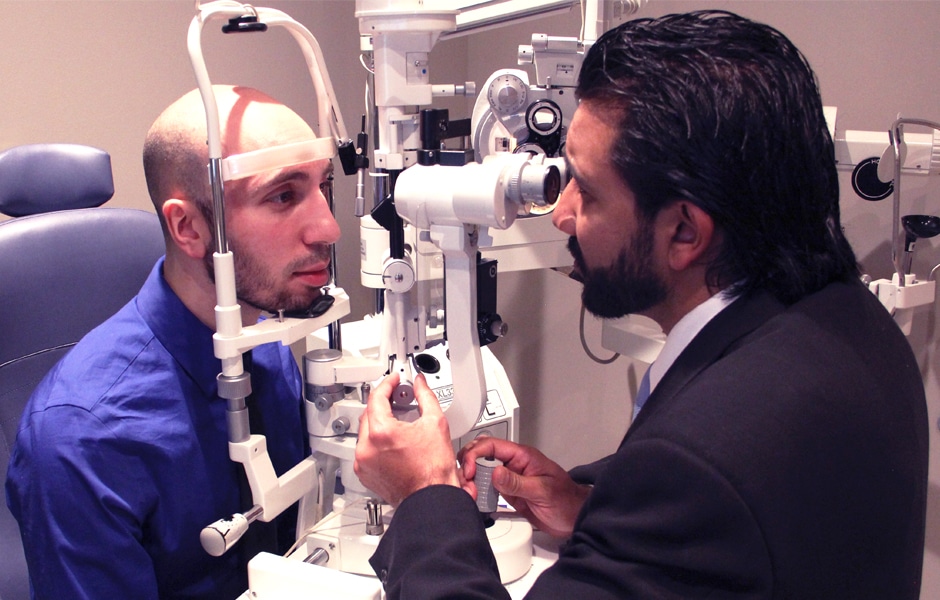Neurologist Andalusia: Professional Neurological and Eye Care Services
Wiki Article
Understanding the Different Vision Adjustment Procedures Available for Clearer Sight
In the realm of vision adjustment procedures, a wide range of options exist to attend to refractive mistakes and offer people with more clear sight. From the widely recognized LASIK surgery to less intrusive procedures like PRK and implantable lenses, the area of ophthalmology uses a variety of methods customized to match various needs and choices. Each procedure includes its very own set of factors to consider, benefits, and prospective dangers. Comprehending the nuances of these vision adjustment approaches is essential for making notified choices regarding one's aesthetic wellness. Let's discover the complexities of these treatments and clarified the path to accomplishing boosted vision clearness.LASIK Surgical Procedure
LASIK surgical procedure is a common refractive procedure used to correct vision problems such as astigmatism, farsightedness, and nearsightedness. This medical strategy, which stands for Laser-Assisted in Situ Keratomileusis, aims to reshape the cornea to enhance exactly how light is focused on the retina, ultimately boosting vision quality.Among the main benefits of LASIK surgery is the quick improvement in vision experienced by people. Several people discover a significant improvement in their eyesight quickly after the treatment. In addition, the majority of clients report marginal discomfort and discomfort during the surgery and recovery period. The healing time for LASIK is relatively fast, with lots of individuals going back to their everyday tasks within a day or two post-operation. In general, LASIK surgery is a popular option for people seeking a long-term option for their vision problems.
PRK Treatment

PRK is an ideal alternative for people with thin corneas or those at a higher danger of eye injuries, as it does not entail creating a corneal flap. The healing process for PRK is somewhat longer contrasted to LASIK, as the epithelium requires time to regrow. Individuals might experience pain and fuzzy vision for a couple of days adhering to the treatment.
In spite of the longer healing time, PRK can produce excellent cause vision renovation, making it a valuable option for those that may not be suitable prospects for LASIK surgery. - Andalusia Pediatrics
Implantable Lenses
In comparison to PRK where the cornea is reshaped directly, implantable lenses supply one more technique for remedying vision by placing synthetic lenses inside the eye. This procedure is particularly helpful for individuals with high degrees of astigmatism, nearsightedness, or farsightedness that may not be ideal prospects for laser surgical treatments like LASIK or PRK.Implantable lenses, also called phakic intraocular lenses, job by supplementing the eye's natural lens with a synthetic one. These lenses can be put in front of the natural lens (former chamber) or behind the iris and in front of the all-natural lens (posterior chamber) By changing the power and positioning of these lenses, ophthalmologists can effectively deal with refractive errors and enhance aesthetic acuity.
One advantage of implantable lenses is that they great post to read are detachable and exchangeable, providing adaptability for future modifications. As with any kind of surgical treatment, there are dangers entailed, such as infection or cataract formation. Patients taking into consideration implantable lenses must speak with an eye treatment specialist to establish the most ideal choice based on their private needs and eye health.
Corneal Rings

The procedure for inserting corneal rings is minimally invasive and fairly fast, frequently carried out as an outpatient treatment. Throughout the surgical treatment, the eye doctor makes a tiny cut in the cornea and inserts the rings at a certain deepness. When in position, the rings aid to improve the cornea, giving a smoother surface area for light to enter the eye, which can lead to clearer vision.
Corneal rings are thought about a relatively easy to fix treatment, as they can be eliminated or replaced if required. While they may not completely eliminate the demand for glasses or contact lenses, corneal rings can considerably enhance vision high quality and overall aesthetic convenience for people with keratoconus or other corneal irregularities.
Refractive Lens Exchange
Following the correction of corneal abnormalities with treatments like corneal rings, one more vision adjustment technique that can resolve refractive mistakes is Refractive Lens Exchange (RLE) RLE is a medical procedure that involves changing the eye's all-natural lens with an artificial intraocular lens (IOL) to deal with refractive errors such as presbyopia, nearsightedness, and farsightedness. This procedure is particularly advantageous for people that may not be ideal candidates for treatments like LASIK or PRK due to factors such as thin corneas or high refractive mistakes.RLE is comparable to cataract surgical procedure, as both include removing the eye's natural lens; nevertheless, in RLE, the lens is clear, not cloudy as in cataracts. The artificial lens dental implanted during RLE can be personalized to resolve the individual's details refractive error, supplying clear vision at various distances. Recuperation time for RLE is relatively quick, and people can expect better vision right after the procedure. Just like any operation, prospective threats and complications exist, so a comprehensive appointment with an eye care expert is vital to figure out if RLE is the appropriate vision adjustment choice.
Final Thought

In the world of vision adjustment treatments, a wide variety of options exist to resolve refractive errors and provide people with clearer view.LASIK surgical treatment is a common refractive treatment utilized to correct vision this troubles such as nearsightedness, astigmatism, and farsightedness.While additionally a common refractive treatment, the PRK (Photorefractive Keratectomy) technique varies from LASIK surgical treatment in its method to correcting vision issues.Following the modification of corneal irregularities with treatments like corneal rings, one more vision improvement method that can address refractive errors is Refractive Lens Exchange (RLE) LASIK surgical procedure, PRK procedure, implantable lenses, corneal rings, and refractive lens exchange are all choices that can resolve various vision concerns.
Report this wiki page